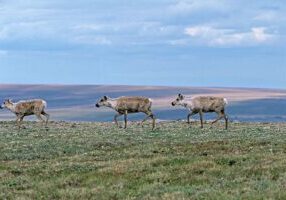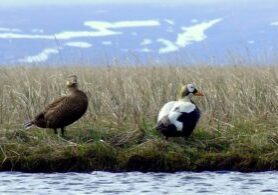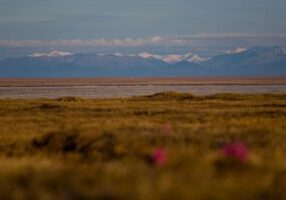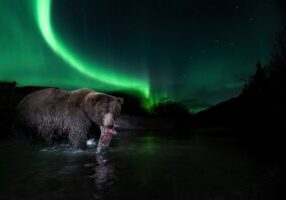NATIONAL PETROLEUM RESERVE-ALASKA
The National Petroleum Reserve-Alaska (Reserve) is the largest single unit of public lands in the nation, spanning nearly 23 million acres across Alaska's western North Slope. It includes some of our nation’s most vital natural resources — millions of acres of wilderness-quality lands with critical habitat for migratory birds, brown bears, caribou, threatened polar bears, walrus, endangered beluga whales and more. The Alaska Native communities that live in and around the Reserve have maintained a subsistence lifestyle for thousands of years based on its living resources.
Birds from all four flyways in North America, plus several international flyways, migrate to the Reserve every year to raise their young. Tundra swans from the Atlantic Flyway, white-fronted geese from the Mississippi Flyway, pintails from the Central Flyway, and Pacific black brant from the Pacific Flyway converge on this summer destination, just to name a few. Even shorebirds from as far away as Hawaii and New Zealand find their way north to the Reserve.
Development in the Reserve in Alaska's Western Arctic has begun, multiple drilling projects are on the horizon, and industry has shifted its focus to gaining access to protected "Special Areas" including the sensitive wildlife habitat surrounding Teshekpuk Lake.
Five Special Areas of exceptional wildlife value have been are set aside for protection within the Reserve.
@alaskawild What is the National Petroleum Reserve Alaska (NPR-A), or just “the Reserve?” For starters, it’s where ConocoPhillips’ #WillowProject is being developed and where several other massive oil and gas leases are scheduled for development in the coming years. A name like “National Petroleum Reserve Alaska” conjures a bleak, industrious landscape, but there’s actually so much flourishing life and beauty in the Reserve. Join us in learning more about the Reserve and why it urgently needs lasting protections from oil and gas development. Part 2 coming soon! Wildlife photos courtesy of @florianschulzvisuals #PreserveTheReserve #ClimateChange #ClimateCrisis #climateaction #Climate #environment #conservation #publicland #alaska #oilandgas #StopWillow ♬ original sound - Alaska Wilderness League
FOR MORE DETAILED INFORMATION ABOUT SPECIAL AREAS:
Peard Bay | Colville River | Kasegaluk Lagoon| Teshepuk Lake | Utukok River Uplands
LATEST NEWS AND UPDATES
LOCATION

THE WILLOW DRILLING THREAT
ConocoPhillips' Willow drilling project proposed in America's Western Arctic is a disaster for this fragile Arctic region, home to Indigenous communities and bountiful wildlife including caribou, fish and migratory birds. It's also a disaster for our climate. At a time when scientists agree: We MUST STOP new drilling to secure our planet's future, Willow is a terrible idea.
WATCH OUR VIDEO: An explainer of ConocoPhillips' Willow drilling project.
TAKE ACTION: To speak out against Arctic drilling, click here!
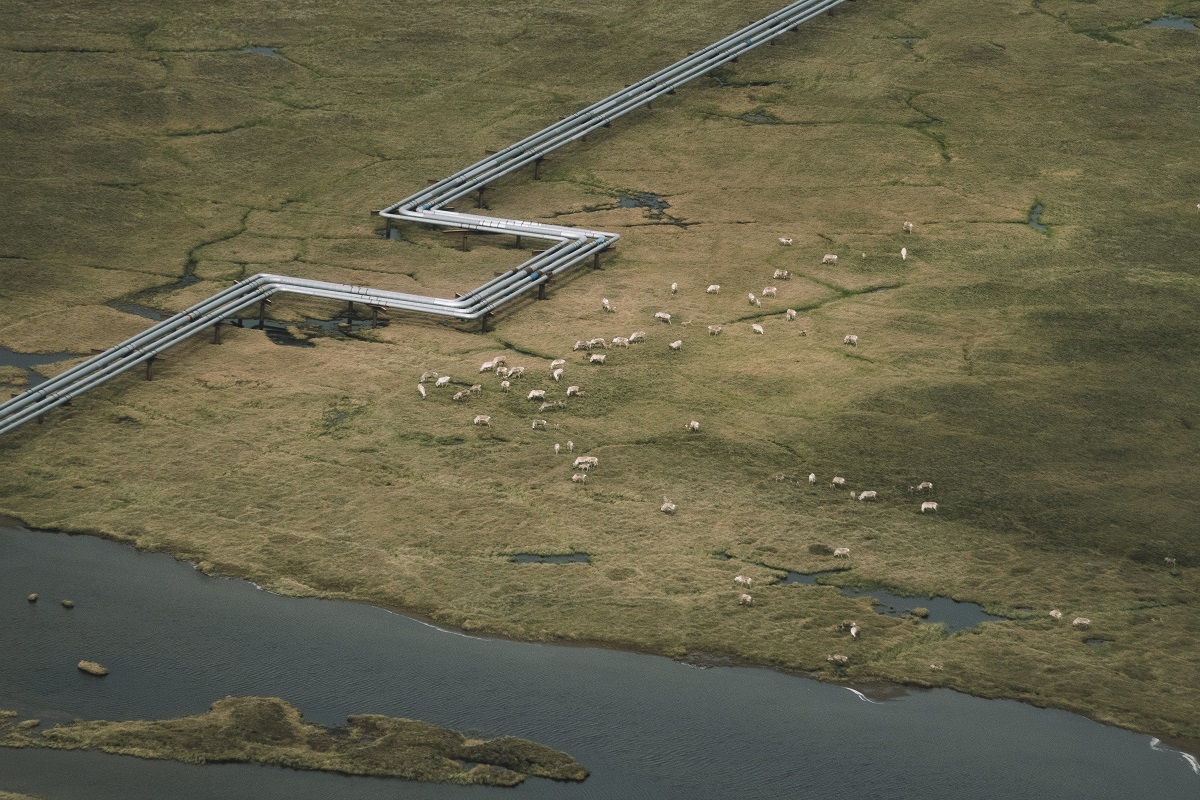
Caribou from the Teshekpuk herd graze near an oil pipeline 30 miles west of Prudhoe Bay. Although the pipeline rises 6' above the tundra, in studies, caribou tend to treat the pipeline as a wall. Although Teshekpuk Lake remains a designated area with special protections, recent discoveries have prompted interest in oil drilling and infrastructure.

